Topographic maps are essential tools for various industries—ranging from construction and urban planning to environmental management and forestry. Today, the ability to capture highly accurate elevation data using drones equipped with LiDAR (Light Detection and Ranging) sensors has transformed the way professionals gather and interpret terrain information. Even more transformative is the capability to automate much of the data processing, significantly reducing the time and effort required to produce detailed topographic maps. Below, you will find a step-by-step guide to create a topographic map from aerial LiDAR data, demonstrating how these automated methods bring both efficiency and accuracy to diverse sectors.
Creating a Comprehensive Topographic Map from Aerial LiDAR Data
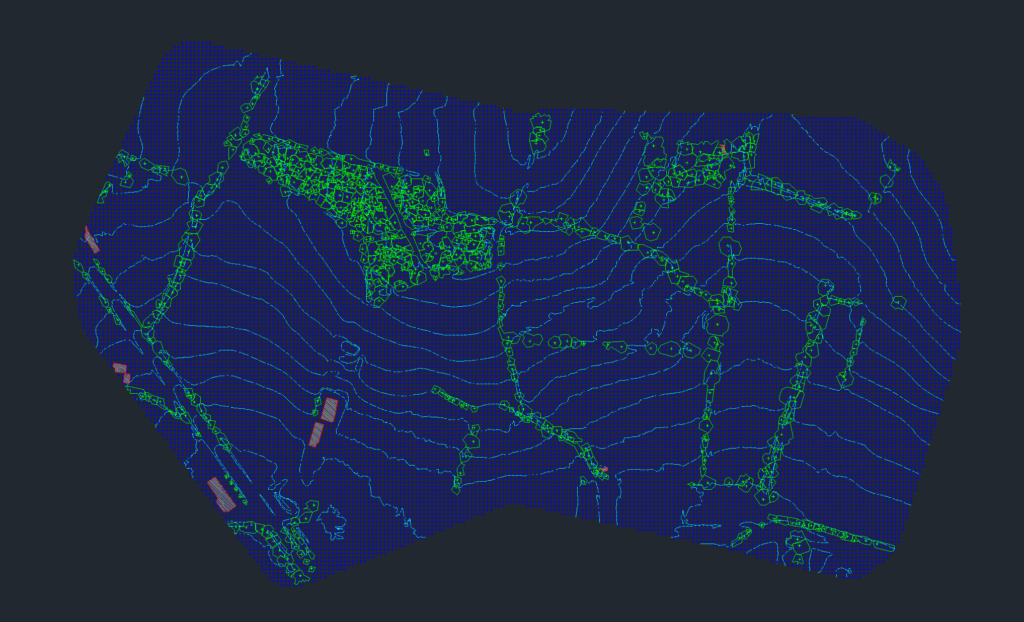
Steps to Create a Topographic Map from Aerial LiDAR Data
Contour Generation
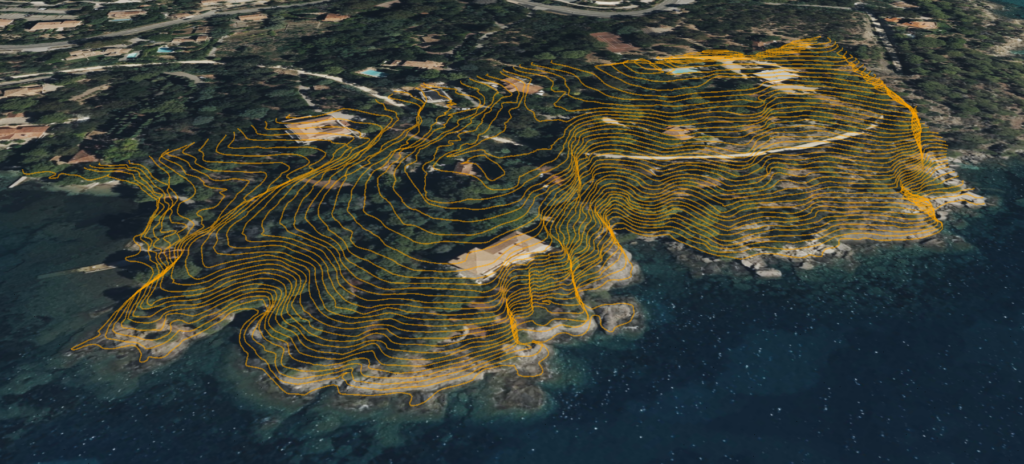
Contour lines represent lines of equal elevation on a map, helping visualize the three-dimensional terrain on a two-dimensional plane. Here’s how the process typically works:
- Data Import and Filtering
- Import the raw LiDAR point cloud into a specialized GIS or point cloud processing software.
- Clean and filter out noise or erroneous data points (e.g., artifacts caused by vehicles, birds, or sensor anomalies).
- Triangulated Irregular Network (TIN) Creation
- Convert the filtered LiDAR points into a TIN, which forms a mesh of connected triangles representing the surface.
- Contours Extraction
- Specify a contour interval (e.g., 1 meter or 5 meters) depending on the required detail.
- Automated algorithms trace along constant elevation values in the TIN to generate contour lines.
- Smoothing and Cleaning
- Smooth any jagged lines to improve map readability.
- Remove or adjust contours that are extremely close together if they are a result of noise.
Use in Industry: Accurate contours are critical for construction site planning, hydrological analysis (flood plain studies), and environmental impact assessments.
Grid Generation
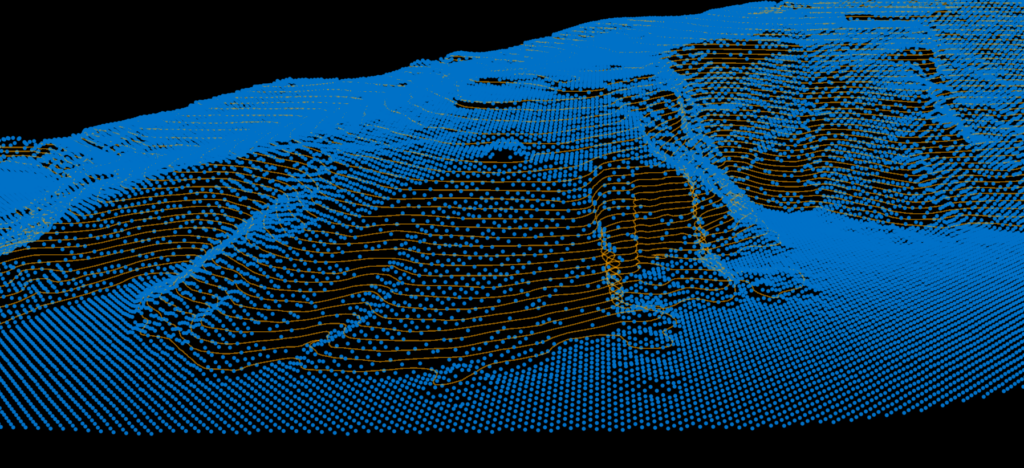
Grid generation involves creating a regularly spaced matrix of points (or cells) that represents the terrain. It is useful for various analytical tasks, such as volume calculations and slope stability analysis.
- Raster or DEM Creation
- Convert the LiDAR data into a Digital Elevation Model (DEM). This step is often automated through interpolation methods in GIS software.
- The DEM is essentially a grid where each cell value represents the elevation at that location.
- Adjust Grid Resolution
- Define the grid resolution (e.g., 1m x 1m or 5m x 5m). A finer resolution captures more detail but produces larger datasets.
- Balance resolution with processing overhead and data storage considerations.
- Assign Elevation Values
- Each grid cell is assigned an elevation value, generally through bilinear interpolation of the nearby LiDAR points.
Use in Industry: Grids or DEMs form the foundation of many geospatial analyses in urban planning, mining (to calculate volumes of excavation), and infrastructure development.
Building Footprint Extraction
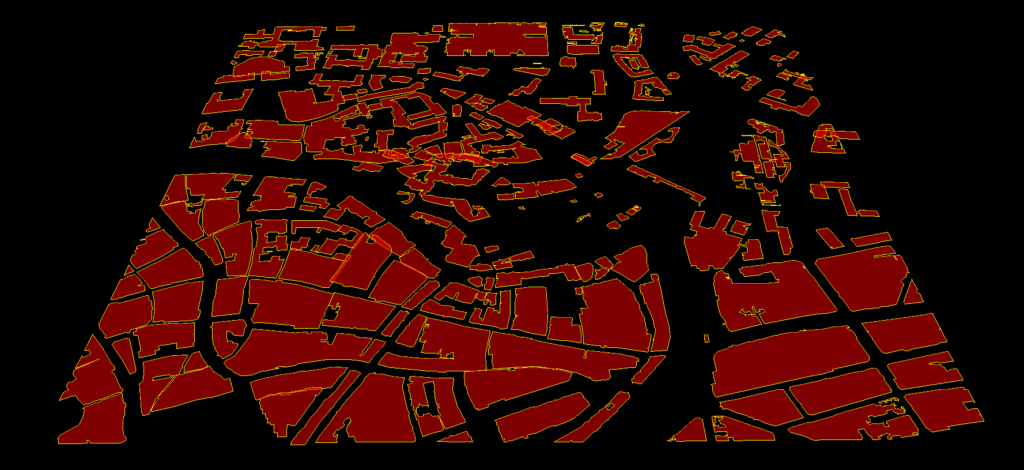
Once the terrain model is established, extracting building footprints allows for accurate mapping of man-made structures. Automated machine learning or rule-based methods can isolate rooftops in LiDAR data.
- Ground vs. Non-Ground Classification
- Classify LiDAR points into ground and non-ground points using algorithms (e.g., cloth simulation filtering, progressive triangulation).
- Non-ground points typically represent buildings, vegetation, or other above-ground features.
- Rasterization and Height Thresholding
- Convert the non-ground points into a raster.
- Apply a height threshold (e.g., anything above 2 meters can be considered a building or tall vegetation).
- Shape Detection
- For building extraction, look for planar surfaces or rectangular outlines.
- Automated algorithms segment the data and detect polygonal shapes that represent rooftops.
- Post-Processing
- Refine footprints by removing small noise polygons.
- Merge adjacent polygons that form part of the same structure.
Use in Industry: Building footprints are indispensable for city planning, insurance risk assessment, emergency response planning, and architectural design.
Tree Detection
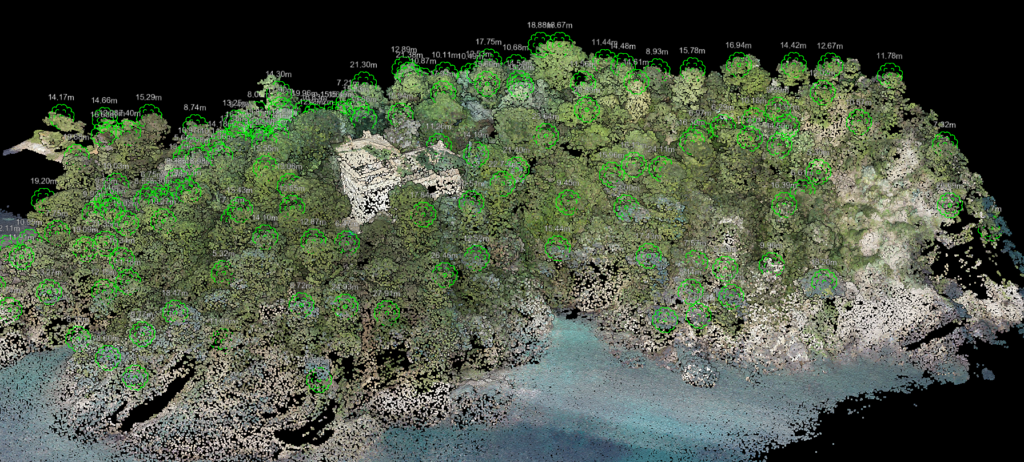
Distinguishing vegetation from other non-ground points in a LiDAR dataset is crucial for environmental monitoring, forestry management, and urban planning.
- Identify Vegetation Points
- After separating ground and non-ground points, classify vegetation based on reflectance properties, height, and shape.
- Some LiDAR systems also record multiple returns, which can help identify foliage density.
- Filtering and Smoothing
- Eliminate outliers like utility poles or other non-building, tall features that don’t fit vegetation profiles.
- Apply smoothing algorithms to group contiguous vegetation points together.
- Segmentation
- Trees generally appear as clusters of points. Automated cluster analysis can group these points.
- Separate individual trees based on the vertical distribution of points.
Use in Industry: Tree detection aids in environmental impact studies, precision forestry, and city landscaping. Automated tree detection helps identify areas requiring conservation, reforestation, or hazard management.
Tree Crown Delineation
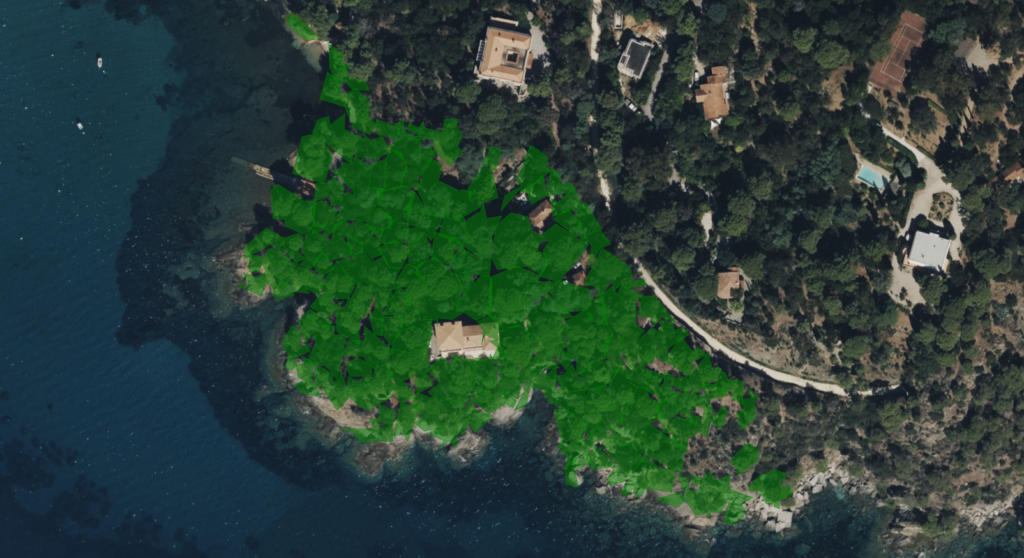
Detecting individual trees is useful, but going a step further to outline each tree’s canopy or crown can offer more detailed insights, such as canopy diameter, tree health, and potential interference with power lines.
- Canopy Height Model (CHM) Creation
- Subtract the ground elevation (DEM) from the top-of-canopy elevation to obtain a Canopy Height Model.
- The CHM represents the height of the vegetation above ground at each cell.
- Local Maxima Detection
- Identify the highest points (peaks) within each crown using local maxima filters.
- Each local maximum is assumed to correspond to a separate tree or tree cluster.
- Watershed or Region-Growing Algorithms
- Use the local maxima as seed points in a watershed or region-growing segmentation approach to delineate the boundary of each crown.
- Validation and Cleanup
- Merge over-segmented crowns.
- Separate large clusters if multiple peaks exist within the same canopy area.
Use in Industry: Detailed tree crown information is vital in forestry management (for tree inventory and health assessment), utility corridor management (preventing outages due to overhanging branches), and environmental habitat studies.
Export to DXF
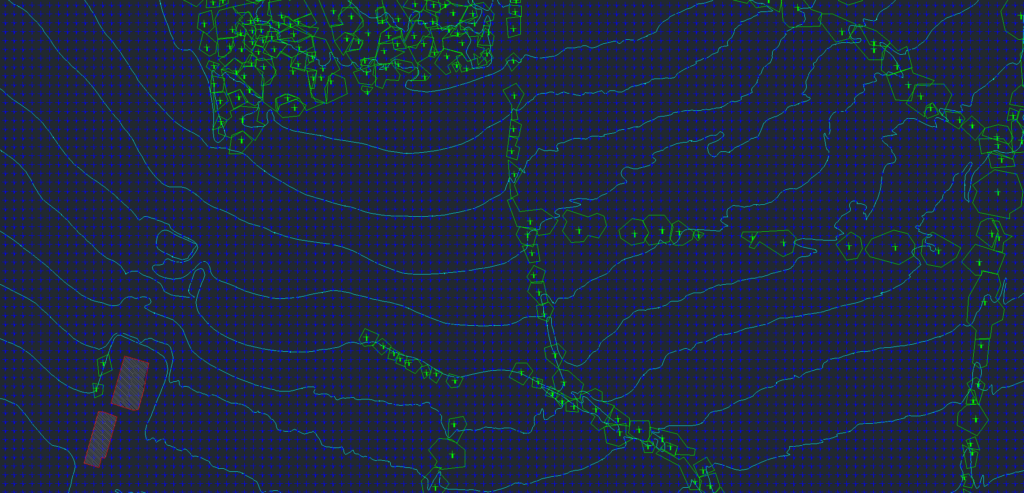
Finally, to integrate your topographic data with CAD (Computer-Aided Design) or other design software, you need to export the processed information.
- Data Simplification
- Before exporting, consider simplifying complex polygons (building footprints, tree crowns) to reduce file size and maintain manageable detail.
- Layer Organization
- Assign different layers for contours, building footprints, tree outlines, and other feature classes.
- This organization allows easy manipulation and visibility control in CAD software.
- Export Settings
- Select DXF as the file format.
- Double-check coordinate system settings to ensure consistency across platforms.
- Quality Assurance
- Open the DXF file in CAD software to confirm proper layer segmentation, alignment, and scale.
Use in Industry: CAD systems are widely used by architects, engineers, and surveyors. Being able to seamlessly export your LiDAR-derived map ensures efficient collaboration across different design and planning teams.
Why Automation Matters
Implementing automated techniques across these steps—contour generation, grid creation, building footprint extraction, tree detection, and crown delineation—dramatically reduces manual labor. Traditional methods of field surveying and manual data classification are time-consuming and prone to errors. In contrast:
- Speed: Automated algorithms can process massive LiDAR datasets far more quickly than manual methods.
- Consistency: Defined algorithms apply the same rules across the entire dataset, minimizing human bias or oversight.
- Scalability: As drone technology and sensor quality improve, vast areas can be surveyed quickly, making automation essential to handle the resulting large datasets.
Generate your Topographic Map Automatically
Create a FREE account now to start processing your point cloud! Get 2 GB of storage and classify up to 10 hectares for free.
Applications in Different Industries
- Construction and Urban Planning: Rapidly generate up-to-date, high-resolution maps for infrastructure projects.
- Forestry and Environmental Management: Monitor tree health, track canopy changes, and plan conservation or logging activities responsibly.
- Utilities and Infrastructure: Map power lines, pipelines, and roads while identifying encroaching vegetation for maintenance.
- Mining and Resource Extraction: Produce volume calculations for excavation sites and monitor changes in terrain over time.
- Emergency Response: Update critical topographic information in flood-prone or disaster-hit areas, aiding rescue and rebuilding efforts.
Conclusion
Creating a topographic map from aerial LiDAR data involves a multi-step process that can be highly automated—from generating contours and DEM grids to extracting man-made and natural features. Each step adds a layer of detail, enabling engineers, architects, environmental scientists, and many others to make data-driven decisions. Automation not only improves accuracy and reduces human error but also makes large-scale mapping projects feasible and more cost-effective. As drone technologies continue to evolve, the process of surveying and topographic mapping will become even more streamlined, unlocking new possibilities in numerous industries worldwide.
